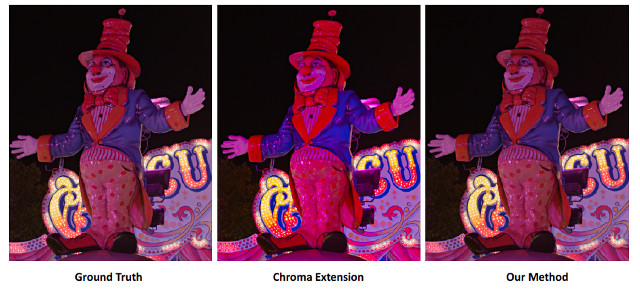The opposite problem to gamut compression is gamut extension, which was discussed by Syed Waqas Zamir of the Universitat Pompeu Fabra in Spain. Here, the idea is to take the source content gamut delivered in BT.709 or DCI-P3 and expand it to the wider gamut capabilities of the display. Displays that can exceed the P3 gamut are almost all powered by quantum dots today.
There are several ways to perform a gamut expansion from a smaller source gamut to a larger target gamut. One way is to stretch the colors out (linearly or non-linearly) to the wider gamut, but this may alter the artistic intent of the content’s creator. Also, memory colors such as the blue of the sky and the green of the grass may look unrealistic after the application of GE, requiring a special treatment. And, it must preserve skin tones, which some algorithms don’t do very well. The goal is to expand the content without perceptually changing artistic intent.
In their paper, Zamir’s team presented a method that attaches a weighting function to the saturation of the pixel. Less saturated colors have higher weights and are expanded less than more saturated colors with lower weights. Apparently, the idea is to increase contrast to increase the gamut.
The images below show the new method vs. alternatives for memory colors like grass and saturated colors.


The group also looked at the temporal response of the expanded gamut conversion and found they were free from any noticeable spatial and temporal artifacts, had no hue shifts or flickering and had no unexpected changes in chroma and brightness of objects. However, the expansion cannot be done in real time, so they are working to achieve this level. – CC

